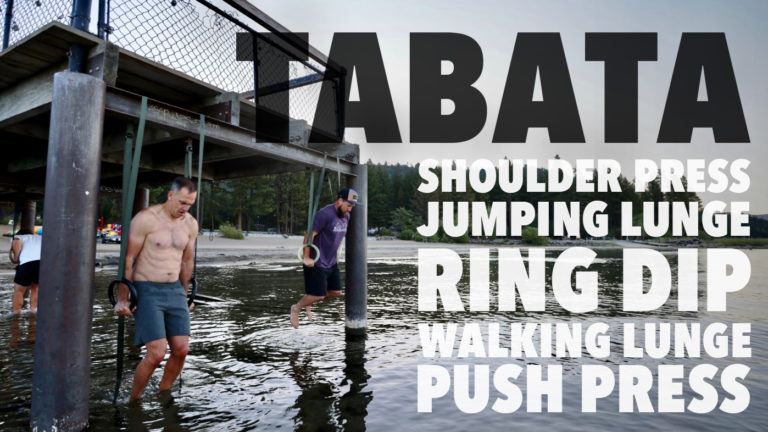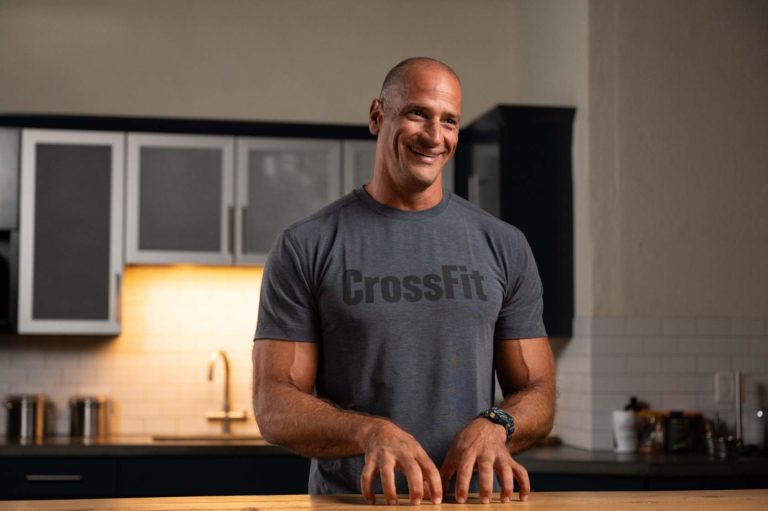Muscle soreness is a crucial part of the CrossFit training process. Initially, when we start, we experience soreness every day, making simple tasks like climbing stairs a challenge. However, as we progress, this soreness becomes less frequent. Yet we know certain workouts like Karen (150 wall-ball shots for time), Barbara, Angie, or Cindy, will leave us sore for the next couple of days if we push ourselves.
In the 2008 CrossFit Journal article “Muscle Damage and Soreness: An Overview,” Tony Webster delved into the subject of muscle soreness, providing answers to questions that often plague CrossFit enthusiasts: why do we get sore, can we prevent it, and what should we do when we’re really sore? This information — still pertinent today — is a valuable resource for a new generation of CrossFit athletes asking, “Why am I so sore?”
Understanding delayed onset muscle soreness (DOMS) is key to comprehending the science behind muscle soreness. It’s the soreness we experience a couple of days after a workout, appearing about eight hours after exercise and peaking 24-48 hours later.
We’ve all felt the tenderness of muscles to the touch and muscle stiffness characteristic of DOMS. The prevalent theory is that eccentric muscle actions cause DOMS. The eccentric portion of a movement is the “lowering” phase, such as sitting in the squat or bringing the bar back down to the shoulders in the press. This eccentric action, more than anything, is what causes damage to the microstructure of muscle fibers. In turn, the body initiates an inflammatory response to repair the damaged fibers, resulting in soreness.
While muscle soreness may be uncomfortable, it’s a sign of productive muscle breakdown, repair, and adaptation. This cycle is one of the key processes that enable us to build muscle and strength. As we adapt, similar workouts will not cause the same degree of soreness as they did the first time.
For the CrossFit athlete, the constant variance of movements, reps, loads, and sets performed at high intensity is the perfect recipe for repeated muscle damage and adaptation. This is one reason we rarely plateau in CrossFit; we’re constantly adapting to the stimulus. A side benefit to soreness is that it can help us fine-tune our movement technique. For example, if only our quads get sore from squats and lunges or only our lower back from deadlifts, it’s a sign we need to modify our technique so we use our glutes and hamstrings more.
 Webster made an interesting point: the workouts that generally cause the most soreness aren’t the heavy lifting days we’d suspect, but the higher volume calisthenic or “lighter” workouts that can leave us hobbled. This is most likely due to the higher number of reps and the relatively high speed at which the reps are performed. Faster eccentric actions through a full range of motion — which CrossFit emphasizes — cause more significant strain and damage. Think Tabata squats and Tabata This! The breakdown, repair, and adaptation cycle caused by such workouts leads to considerable soreness and tremendous results, which is why calisthenics and movements like wall balls are a mainstay in our program.
Webster made an interesting point: the workouts that generally cause the most soreness aren’t the heavy lifting days we’d suspect, but the higher volume calisthenic or “lighter” workouts that can leave us hobbled. This is most likely due to the higher number of reps and the relatively high speed at which the reps are performed. Faster eccentric actions through a full range of motion — which CrossFit emphasizes — cause more significant strain and damage. Think Tabata squats and Tabata This! The breakdown, repair, and adaptation cycle caused by such workouts leads to considerable soreness and tremendous results, which is why calisthenics and movements like wall balls are a mainstay in our program.
Recommendations
Mild to moderate soreness is an inevitable by-product of working hard, adapting, building muscle, and getting stronger. CrossFit’s variance allows us to work out even when we are sore, as the emphasis changes daily. That said, if you have severe soreness in a specific area, you should give that muscle group some rest by working around it or moving in a way other than what caused the initial soreness. For example, light Romanian deadlifts might not be a problem if your legs are sore from squats. Or you can substitute an exercise without an eccentric action, such as a sled push.
Post-workout stretching or massage will not prevent or reduce DOMS, but gentle stretching or massage when you are sore may help reduce pain in the moment. Taking NSAIDs, like ibuprofen, to reduce muscle soreness is not recommended. This will decrease the pain, but because it affects the inflammatory process, it may slow recovery and dampen adaptation. The same can be said for icing and other forms of cryotherapy.
Ultimately, the best advice to avoid the debilitating soreness that affects future workouts is to gradually increase intensity over time in terms of volume, speed, and loads, and to not rush back into CrossFit training after a long layoff.
About the Author
 Stephane Rochet is a Senior Content Writer for CrossFit. He has worked as a Flowmaster on the CrossFit Seminar Staff and has over 15 years of experience as a collegiate/tactical strength and conditioning coach. He is a Certified CrossFit Trainer (CF-L3) and enjoys training athletes in his garage gym.
Stephane Rochet is a Senior Content Writer for CrossFit. He has worked as a Flowmaster on the CrossFit Seminar Staff and has over 15 years of experience as a collegiate/tactical strength and conditioning coach. He is a Certified CrossFit Trainer (CF-L3) and enjoys training athletes in his garage gym.
Comments on Why Am I So Sore?
So many athletes hit the Ice Bath after workouts during competition. The thinking is it reduces swelling, soreness and speeds recovery. The article seems to state the opposite. Would love some clarification on this.
Thank you for your great question, Jim! For athletes in competition, the allure of the ice bath is most likely that it provides relief from high body temperature and acute muscular and, possibly, joint soreness or swelling. An ice bath will not speed recovery. Recovery won’t really happen for days after the competition. So, the ice bath is basically a pain management and body temperature regulating strategy in-competition. I hope that answers your question!
Why Am I So Sore?
2